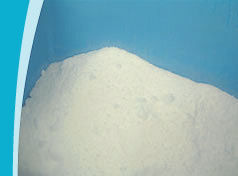
| home page |
| dry ice products |
| dry ice applications |
| interactive calculations |
| supply |
| about us |
| what is dry ice? |
| dry ice safety info |
| contact us |
 |



 Dry
ice is manufactured from pure liquid carbon dioxide (CO2)
in a controlled environment. CO2 is
stored in liquid form by maintaining specific pressure and temperature
in a pressure vessel, known as a cryogenic tank. The CO2 liquid
is piped into an expansion chamber, where the CO2 pressure
is released and changes from liquid to gas. Using favourable techniques,
a portion of the CO2 gas will convert
to a white soft "snow", which is compressed into pellets, nuggets
or blocks of dry ice, depending on the process that is employed.
Dry
ice is manufactured from pure liquid carbon dioxide (CO2)
in a controlled environment. CO2 is
stored in liquid form by maintaining specific pressure and temperature
in a pressure vessel, known as a cryogenic tank. The CO2 liquid
is piped into an expansion chamber, where the CO2 pressure
is released and changes from liquid to gas. Using favourable techniques,
a portion of the CO2 gas will convert
to a white soft "snow", which is compressed into pellets, nuggets
or blocks of dry ice, depending on the process that is employed.
The compressed Dry Ice maintains a temperature of -80º C (Water changes into ice at 0º C). If left exposed, dry ice will rapidly attempt to lower the surrounding temperature to its own. In doing so, the dry ice will lose mass through the transformation from solid CO2 into CO2 gas. This is known as the sublimation process. In a closed environment (i.e. a cooler box), the dry ice will reduce the product and surrounding air temperature, thereafter maintaining temperature for a specific period of time. The variables of time and temperature can be calculated to provide optimal control for the purpose that it is required. Assistance in establishing the best fit can be supplied by our technical department.
 As Dry Ice is inert, dry and leaves no residue during
the sublimation process, it can, with suitable precautions, be easily
managed and transported. It has become well entrenched in a number of
industries throughout the world. It is used in most major cities as a
low cost refrigerant for cooling a range of applications, such
as being an integral part of the food processing chain, the transporting
of perishable foodstuffs, as well as the rapid cooling and cleaning of
engineering components.
As Dry Ice is inert, dry and leaves no residue during
the sublimation process, it can, with suitable precautions, be easily
managed and transported. It has become well entrenched in a number of
industries throughout the world. It is used in most major cities as a
low cost refrigerant for cooling a range of applications, such
as being an integral part of the food processing chain, the transporting
of perishable foodstuffs, as well as the rapid cooling and cleaning of
engineering components.
Please go to our products page to view different forms of dry ice.